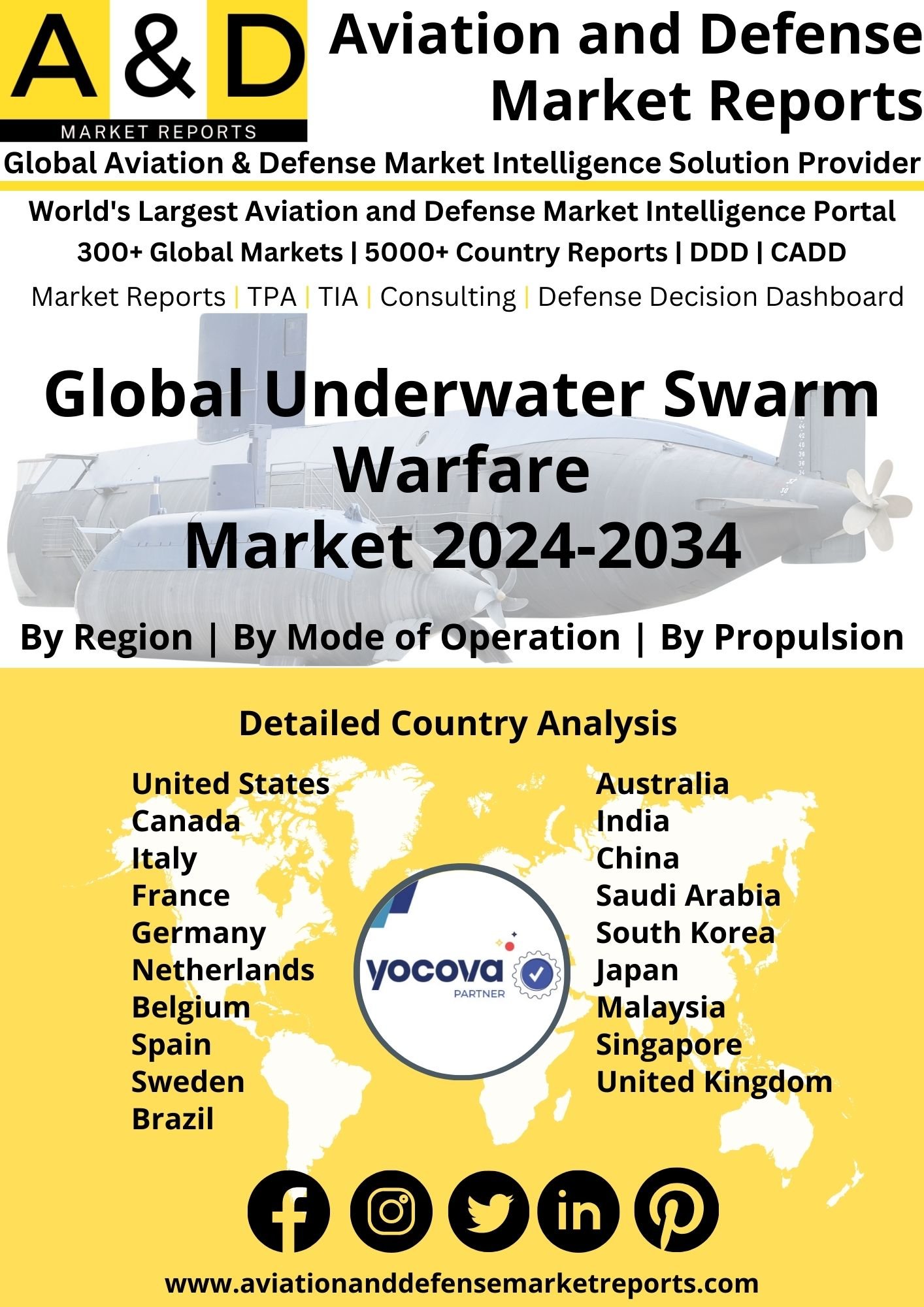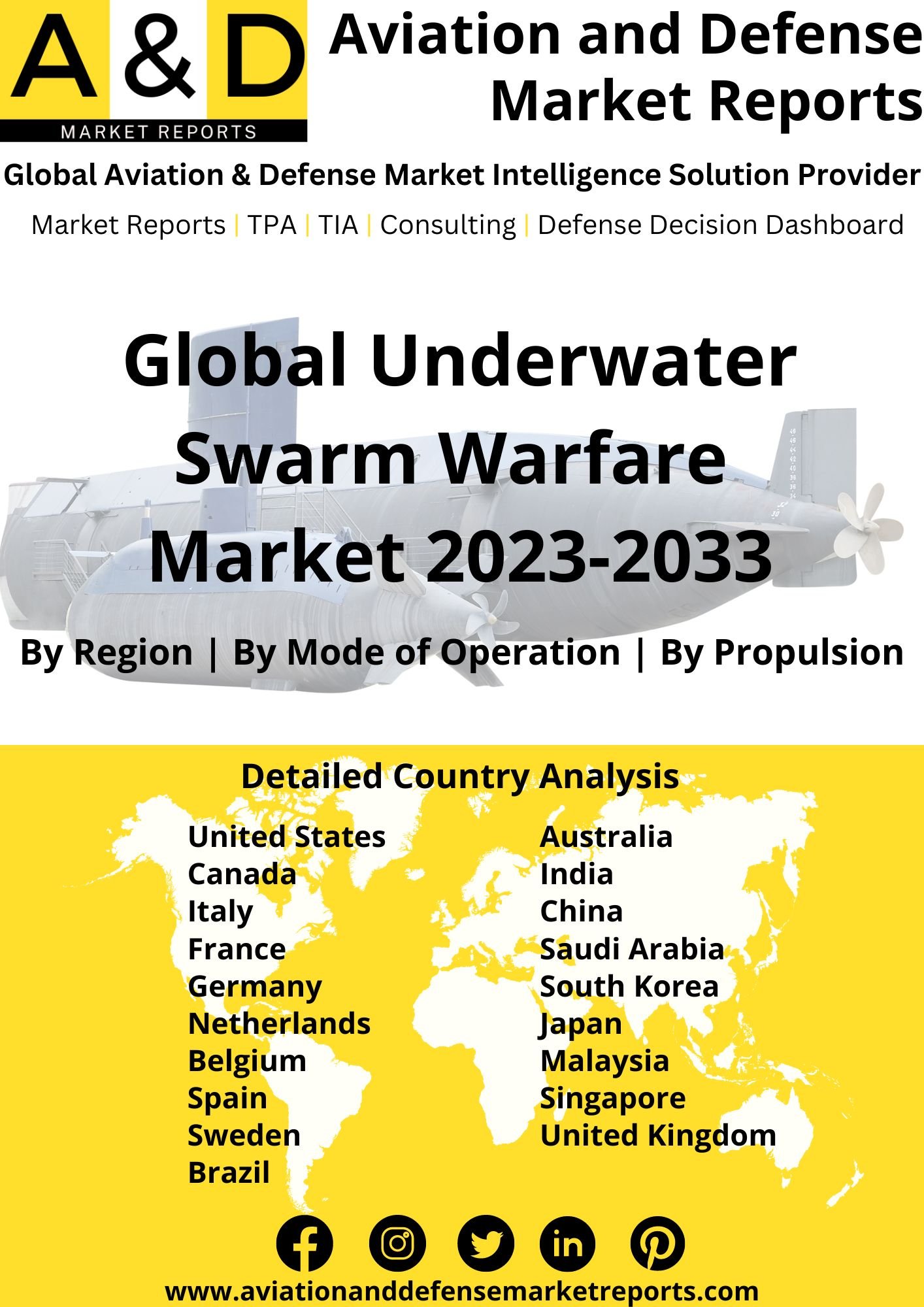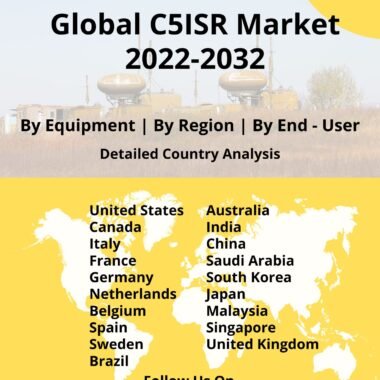Description
Underwater Swarm Warfare Market
Underwater swarm warfare refers to the use of a coordinated group of autonomous or semi-autonomous underwater vehicles, often referred to as “swarmbots,” to achieve military objectives. These swarms can consist of various types of underwater vehicles, such as drones, unmanned submarines, torpedoes, and even underwater robots, that work together as a cohesive unit to carry out missions.
Swarmbots in underwater warfare are designed to operate autonomously or semi-autonomously, meaning they can make decisions based on predefined algorithms, sensor inputs, or communication with other members of the swarm. Effective coordination among swarm members is crucial for achieving mission success. A swarm can include different types of vehicles, each with its specific capabilities. Some may be equipped with sensors for reconnaissance, while others might carry torpedoes for offensive actions. This diversity allows the swarm to adapt to various mission requirements.
Swarms use distributed sensing to gather information from multiple vantage points. This enhances situational awareness and provides a more comprehensive picture of the underwater environment, potential threats, and targets. Swarms can adapt to changing conditions and threats by adjusting their behavior in real time. They can reconfigure their formations, allocate tasks, and respond to unexpected developments. The use of multiple vehicles in a swarm provides redundancy. If one or more vehicles are lost or disabled, the swarm can continue to operate effectively, reducing the impact of individual vehicle failures.
Swarms can employ cooperative tactics, such as surrounding and overwhelming larger targets, employing decoys to confuse adversaries, or creating a sensor network to monitor a wide area. The use of swarm tactics can make it challenging for adversaries to detect and counter individual swarm members, especially if the swarm is dispersed and operates at various depths. Swarms can be used for various missions, including reconnaissance, surveillance, mine detection and neutralization, anti-submarine warfare, and offensive actions against enemy vessels or installations. While underwater swarm warfare offers significant advantages, there are challenges to overcome, such as maintaining communication between swarm members in underwater environments, avoiding collisions, managing energy resources, and ensuring the security of the swarm against hacking or jamming.
Major factors driving Swarm Warfare Market Growth
Swarms of underwater vehicles can cover a larger area and gather information from multiple points, leading to improved situational awareness. This is crucial for reconnaissance, surveillance, and intelligence-gathering missions. By leveraging a variety of specialized vehicles within a swarm, naval forces can enhance their operational capabilities. Different types of vehicles can be equipped with specific sensors or payloads, allowing for versatile and adaptable mission profiles. The use of autonomous or remotely operated vehicles in swarm warfare reduces the need for human operators to be near potential threats. This minimizes the risk of injury or loss of life.
Trends Influencing the Swarm Warfare Market Size
Advances in artificial intelligence, machine learning, and autonomous navigation were enabling swarm vehicles to operate more independently and make real-time decisions based on their environment and mission objectives. The trend toward smaller and more compact underwater vehicles was allowing for the deployment of larger numbers of swarm bots within a limited space, increasing the potential impact of a swarm.
Integration of multiple sensor types (acoustic, optical, magnetic, etc.) on swarm vehicles allowed for more comprehensive situational awareness, enabling swarms to adapt to changing conditions and make informed decisions.
Swarm Warfare Market Forecast & Dynamics
The underwater swarm warfare market encompasses a variety of technologies, including autonomous underwater vehicles (AUVs), remotely operated vehicles (ROVs), communication systems, sensors, and software for coordinating and controlling swarms. The market is influenced by factors such as defense budgets, technological advancements, strategic priorities, and geopolitical tensions.
Defense budgets and priorities of nations play a significant role in shaping investments in underwater swarm warfare technologies. Countries with maritime security concerns are more likely to allocate resources to developing and deploying swarm capabilities. Naval forces are investing in modernizing their fleets to include swarm capabilities, integrating them with existing naval assets to enhance overall operational effectiveness.
Swarm Warfare Market Analysis for Recent Developments
The US Navy needed to develop swarming technology that would allow several UUVs to work together for battlespace awareness, mine warfare, surveillance, and anti-submarine warfare (ASW) countermeasures. They discovered their solution at the Woods Hole Oceanographic Institution in Woods Hole, Massachusetts. This unmanned project wants additional research in UUV swarming, including approaches for multi-UUV swarming localization, navigation, and communications. The forthcoming contract’s value is yet to be determined. These small unmanned aerial vehicles (UUVs) are meant to mimic the behavior and sensor signatures of enemy submarines, allowing Navy ASW professionals to practice their skills from surface warships, submarines, helicopters, and fixed-wing aircraft.
The evolution of global underwater swarm warfare has redefined naval strategies, introducing a new dimension to maritime operations. Underwater swarm warfare involves coordinated groups of autonomous underwater vehicles operating collaboratively for diverse missions, from reconnaissance to offensive and defensive maneuvers. These swarms exhibit advanced communication and coordination capabilities, allowing them to operate seamlessly in complex and dynamic underwater environments. Equipped with sensors, navigation systems, and artificial intelligence, underwater swarm vehicles can adapt to changing situations in real-time, enhancing their effectiveness in detecting and responding to potential threats.
Applications of underwater swarm warfare include mine countermeasures, intelligence gathering, and strategic surveillance. The distributed nature of swarms provides redundancy and resilience, making them challenging for traditional anti-submarine warfare measures to counter effectively. As nations invest in the development of underwater swarm technologies, there is a growing need for international regulations and norms to address the potential risks and ethical considerations associated with this emerging form of warfare. The era of underwater swarm warfare marks a paradigm shift in naval capabilities, emphasizing the importance of agility, collaboration, and innovation in securing maritime interests globally.
Key Companies
Raytheon Technologies Corporation ·





